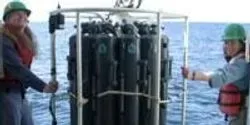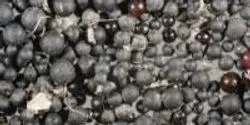environmental science

Alcohol consumption isn’t the only thing a breath analysis can reveal. Scientists have been studying its possible use for diagnosing a wide range of conditions in humans — and now in the beloved bottlenose dolphin. In a report in the American Chemical Society (ACS) journal Analytical Chemistry, one team describes a new instrument that can analyze the metabolites in breath from dolphins, which have been dying in alarming numbers along the Atlantic coast this year.

Lake Erie has become increasingly susceptible to large blooms of toxin-producing cyanobacteria since 2002, potentially complicating efforts to rein in the problem in the wake of this year's Toledo drinking water crisis, according to a new study led by University of Michigan researchers.

Caltech researchers have developed a novel way to visualize proteins generated by microorganisms in their natural environment—including the murky waters of Caltech's lily pond, as in this image created by Professor of Geobiology Victoria Orphan and her colleagues. The method could give scientists insights to how uncultured microbes (organisms that may not easily be grown in the lab) react and adapt to environmental stimuli over space and time.

Late summer is the peak time for harmful algae that can turn lakes into toxic scum, canceling fishing trips and fouling water supplies. While the Pacific Northwest doesn’t get anything near the activity that turned parts of Lake Erie into bright green slime, our coasts are vulnerable in late summer to this largely unpredictable – and in our case unseen – menace.














